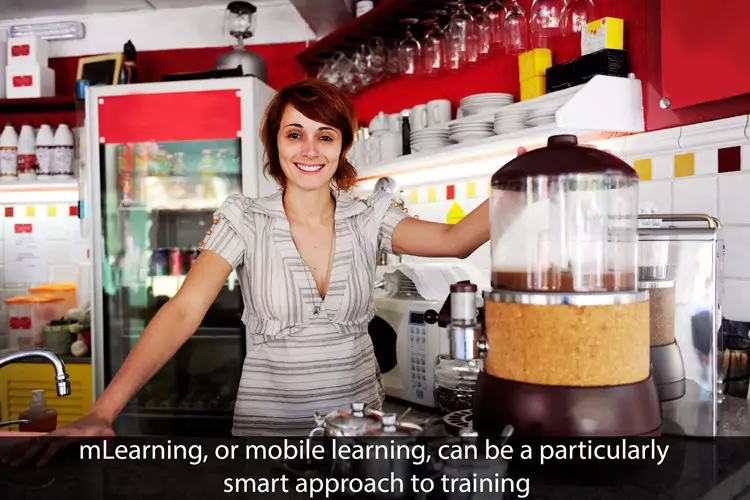mLearning for Low Wage Workers

Low-wage workers, concentrated in the service industry, have the lowest retention rates of all workers. McDonald’s, for example, hires an estimated 1 million workers per year with a 150% turnover rate. While their workforce may be smaller, other fast-food restaurants also hire thousands of workers each year and report similar turnover rates. This means that most fast-food franchises are in a continuous process of hiring and training workers. For these businesses, the challenge is clear: How to train a high number of workers quickly while still recovering their initial investment? After all, if the average retention rate of a worker is only a few weeks or months, keeping training time and cost as low as possible is critical. For this reason, mLearning, or mobile learning, can be a particularly smart approach to training. More importantly, it may also be the most appropriate platform for the demographic in question.

Initial Investment and ROI
mLearning uses mobile devices, such as mobile phones and tablets, to deliver courses, usually in short modules that can be completed in 3 to 5 minutes. Depending on the level of interactivity and whether or not an organization chooses to design apps for multiple platforms, the initial investment can be high. One needs to account for development cost and developer licenses. Developing apps for multiple platforms (e.g., iPhones, Blackberries and Androids) also impacts the start-up cost. For an external app developer, expect the cost to range from $8,000 to $50,000 for a custom designed database app.
Download the free white paper How to Jumpstart an E-Learning Program in Eight (8) Easy Steps
For small businesses with only a few employees, mLearning can prove cost prohibitive, but for large organizations with thousands of employees and high turnover rates, the initial investment can result in a significant return. One simply must weigh the initial investment against the number of employees who require training. In most cases, with mLearning, the higher the training demand, the better the return on investment.
Other Advantages
Using mLearning to train new workers also holds other advantages. In a large organization, it can help to centralize training, strengthening company protocols and reinforcing the company’s brand. It can also take the onus off on-site managers to oversee training. Finally, when training is centralized, less critical information is lost or delivered in a partial or incorrect manner. In short, head office is able to control and monitor training and training progress, which holds the potential to heighten quality control on a myriad of levels.
Why mLearning works with Low-Wage Workers
The lowest paid workers are often under the age of 24, but as reported in a 2013 PEW Research Center study, an estimated 79% of people ages 18 to 24 own a smartphone. Somewhat surprisingly, the difference in smartphone ownership between young people from low- and high-income households is not necessarily significant. 77% of young people from households reporting incomes under $30,000 per year own a smartphone compared to 90% for those living in households reporting incomes over $75,000. Young people are not only more likely to already own a mobile device but also more likely to report being unable to live without one. For this demographic, adopting mobile devices as a training platform simply makes sense. In short, it is a way to deliver training in a readily available and preferred format.
Of course, not everyone who works in the service industry is young. New immigrants and women are also more likely to occupy such positions. Indeed, next to teenagers, Hispanic women are most likely to occupy low-wage service industry positions.
In the past, there has been a notable “digital divide” between working class visible minority populations and predominantly white middle class and upper middle class populations. The rapid growth of the smartphone industry over the past decade, however, has closed and in some cases even eliminated this gap. A 2013 PEW Research Center study on Latinos and technology adoption reported that Latinos now own smartphones, go online from their mobile devices and use social networking sites at similar or higher rates than other groups of Americans. They are also far more likely to own a smartphone or tablet than a home computer. While 83% of whites report owning a desktop or laptop computer, only 72% of Latinos report owning either device. In other words, statically, there is strong evidence to support the assumption that the people most likely to hold low-wage positions in the service industry are also likely to own a mobile phone, making mobile devices a viable training platform. As an added advantage, because mLearning takes place on a mobile platform, it also means that workers can carry their training materials with them on the job and on the go.
In short, at least for large organizations with high numbers of workers and high turnover rates, mLearning can offer a cost effective, accessible, expedient and centralized way to deliver high-quality training.